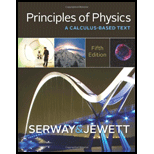
Concept explainers
(a)
To show force exerted by the springs on the particle is
(a)
Answer to Problem 68P
The force exerted by the springs on the particle is shown as
Explanation of Solution
Figure 1 represents two springs attached to mass
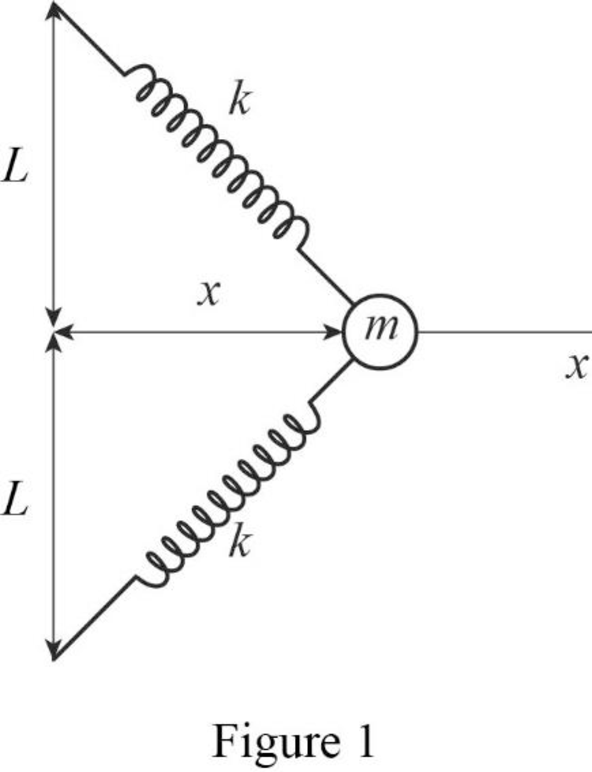
Write the expression for force.
Here,
From Figure 1 the new length is given as
Apply the above condition in equation (I).
From Figure 1, the angle cosine of
Use equation (III) in (II).
Conclusion:
Therefore, the force exerted by the springs on the particle is shown as
(b)
To show potential energy of the system is
(b)
Answer to Problem 68P
The potential energy of the system is shown as
Explanation of Solution
From subpart (a) force is
Write the potential energy of the system.
Here,
Use equation (IV) in (V) and Integrate Equation (V) from
Conclusion:
Therefore, the potential energy of the system is shown as
(c)
To make a plot between
(c)
Answer to Problem 68P
The plot between
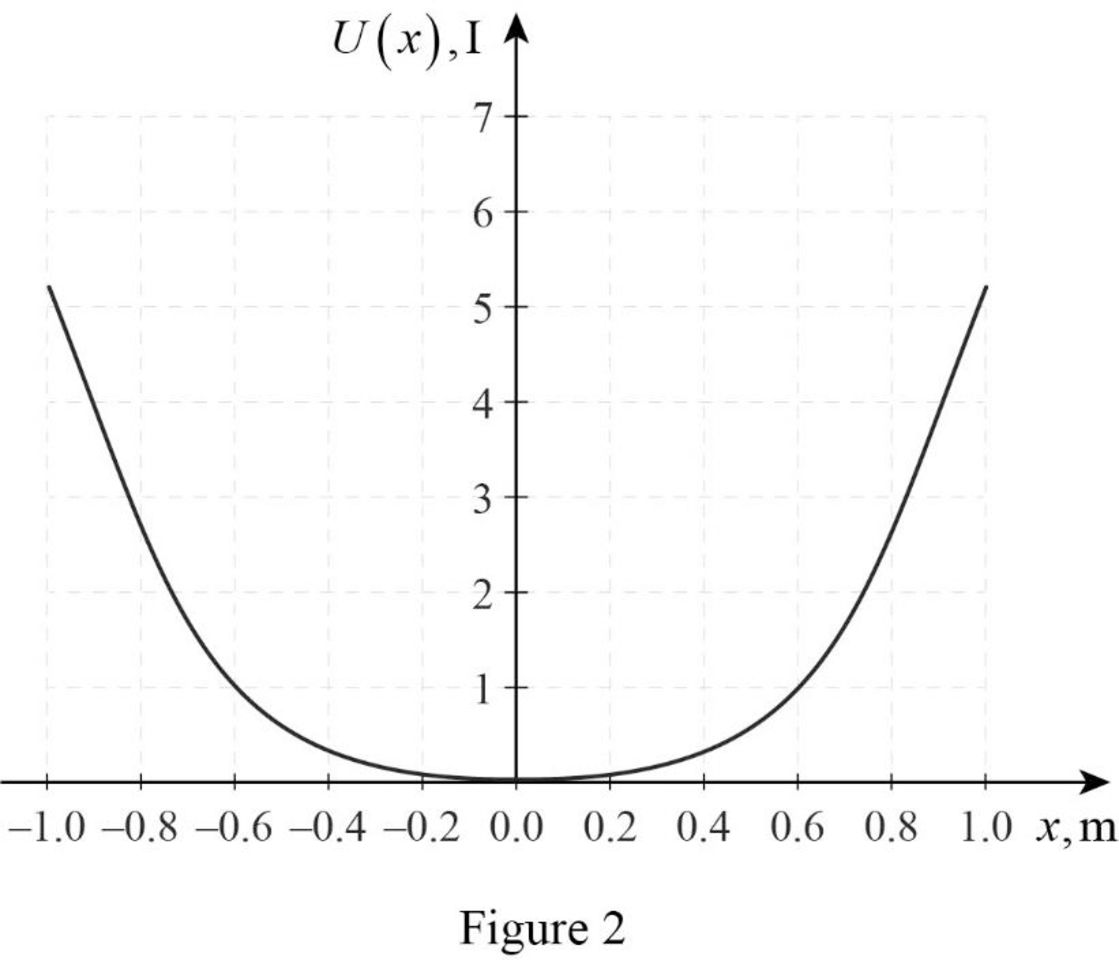
Explanation of Solution
Figure 1 represents the plot between
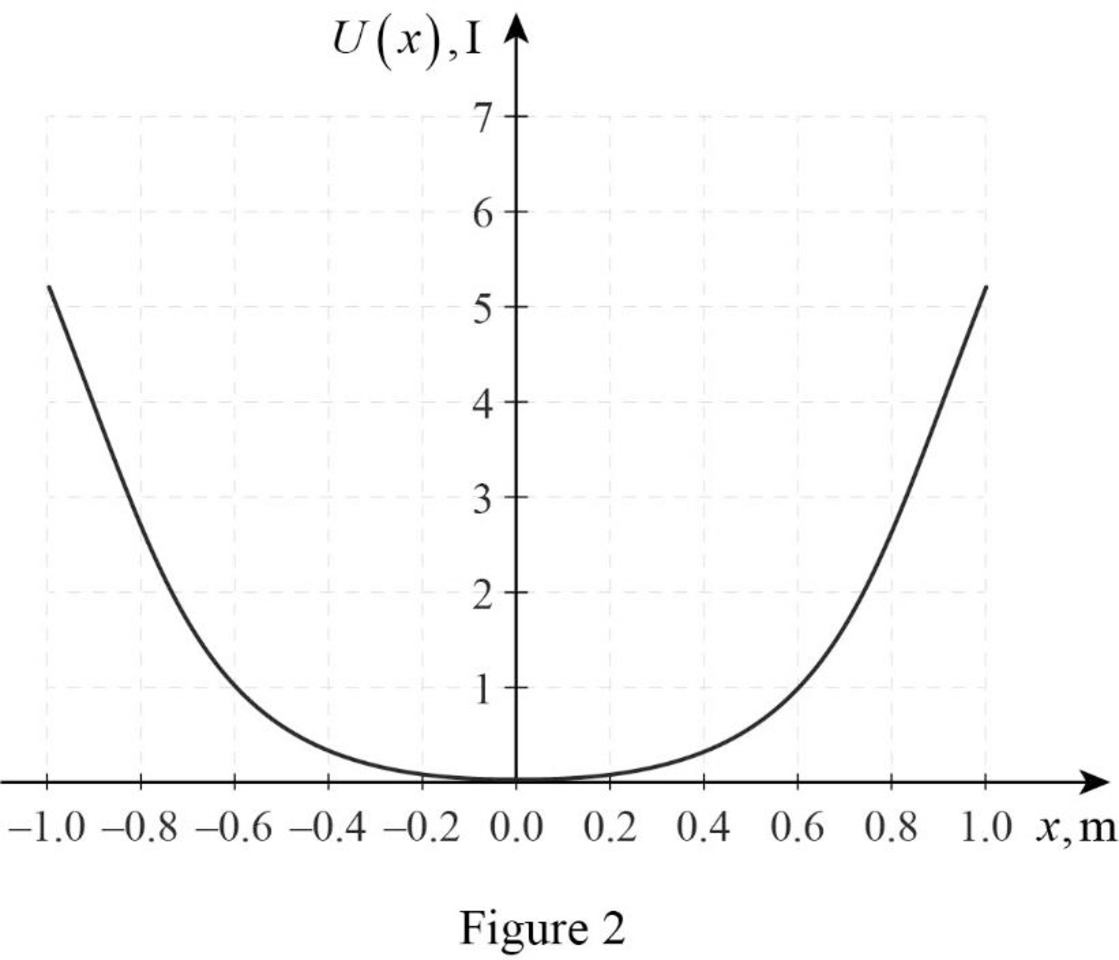
Conclusion:
Therefore, The plot between
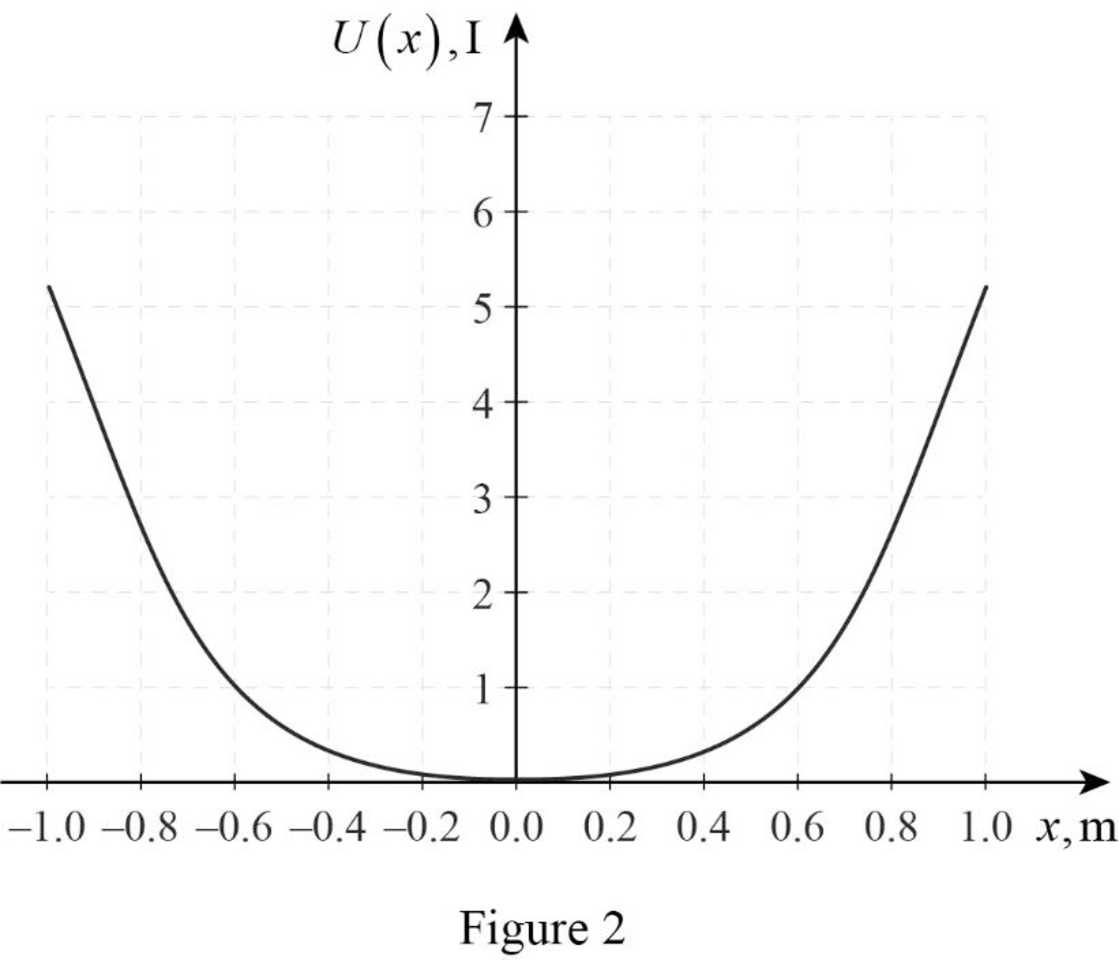
(d)
The speed of the mass
(d)
Answer to Problem 68P
The speed of the mass
Explanation of Solution
From subpart (b) gravitational potential energy is given as
The speed of the particle is equal to the change in gravitational potential energy.
Rearrange equation (VI), to find
Conclusion:
Substitute
Substitute
Therefore, the speed of the mass
Want to see more full solutions like this?
Chapter 6 Solutions
Bundle: Principles of Physics: A Calculus-Based Text, 5th + WebAssign Printed Access Card for Serway/Jewett's Principles of Physics: A Calculus-Based Text, 5th Edition, Multi-Term
- A block of mass m = 2.50 kg is pushed a distance d = 2.20 m along a frictionless horizontal table by a constant applied force of magnitude F = 16.0 N directed at an angle = 25.0 below the horizontal as shown in Figure P5.8. Determine the work done by (a) the applied force, (b) the normal force exerted by the table, (c) the force of gravity, and (d) the net force on the block. Figure P5.8arrow_forwardA block of mass 0.500 kg is pushed against a horizontal spring of negligible mass until the spring is compressed a distance x (Fig. P7.79). The force constant of the spring is 450 N/m. When it is released, the block travels along a frictionless, horizontal surface to point , the bottom of a vertical circular track of radius R = 1.00 m, and continues to move up the track. The blocks speed at the bottom of the track is = 12.0 m/s, and the block experiences an average friction force of 7.00 N while sliding up the track. (a) What is x? (b) If the block were to reach the top of the track, what would be its speed at that point? (c) Does the block actually reach the top of the track, or does it fall off before reaching the top?arrow_forwardA block of mass m = 2.50 kg is pushed a distance d = 2.20 m along a frictionless horizontal table by a constant applied force of magnitude F = 16.0 N directed at an angle = 25.0 below the horizontal as shown in Figure P5.8. Determine the work done by (a) the applied force, (b) the normal force exerted by the table, (c) the force of gravity, and (d) the net force on the block. Figure P5.8arrow_forward
- A 4.00-kg particle moves from the origin to position ©, having coordinates x = 5.00 m and y = 5.00 m (Fig. P6.42). One force on the particle is the gravitational force acting in the negative y direction. Using Equation 6.3, calculate the work done by the gravitational force on the particle as it goes from O to © along (a) the purple path, (b) the red path, and (c) the blue path. (d) Your results should all be identical. Why? Figure P6.42 Problems 42 through 45.arrow_forwardA block of mass m = 5.00 kg is released from rest from point and slides on the frictionless track shown in Figure P5.36. Determine (a) the blocks speed at points and and (b) the net work done by the gravitational force on the block as it moves from point from to . Figure P5.36arrow_forwardThe system shown in Figure P5.43 is used to lift an object of mass m = 76.0 kg. A constant downward force of magnitude F is applied to the loose end of the rope such that the hanging object moves upward at constant speed. Neglecting the masses of the rope and pulleys, find (a) the required value of F, (b) the tensions T1, T2, and T3, and (c) the work done by the applied force in raising the object a distance of 1.80 m. Figure P5.43arrow_forward
- A particle moves in one dimension under the action of a conservative force. The potential energy of the system is given by the graph in Figure P8.55. Suppose the particle is given a total energy E, which is shown as a horizontal line on the graph. a. Sketch bar charts of the kinetic and potential energies at points x = 0, x = x1, and x = x2. b. At which location is the particle moving the fastest? c. What can be said about the speed of the particle at x = x3? FIGURE P8.55arrow_forwardIf the net work done by external forces on a particle is zero, which of the following statements about the particle must be true? (a) Its velocity is zero. (b) Its velocity is decreased. (c) Its velocity is unchanged. (d) Its speed is unchanged. (e) More information is needed.arrow_forwardAs shown in Figure P7.20, a green bead of mass 25 g slides along a straight wire. The length of the wire from point to point is 0.600 m, and point is 0.200 in higher than point . A constant friction force of magnitude 0.025 0 N acts on the bead. (a) If the bead is released from rest at point , what is its speed at point ? (b) A red bead of mass 25 g slides along a curved wire, subject to a friction force with the same constant magnitude as that on the green bead. If the green and red beads are released simultaneously from rest at point , which bead reaches point first? Explain. Figure P7.20arrow_forward
- A block of mass m = 2.50 kg is pushed a distance d = 2.20 m along a frictionless, horizontal table by a constant applied force of magnitude F = 16.0 N directed at ail angle = 25 below the horizontal as shown in Figure P7.5. Determine the work done on the block by (a) the applied force, (b) the normal force exerted by the table, (c) the gravitational force, and (d) the net force on the block.arrow_forwardA block is placed on top of a vertical spring, and the spring compresses. Figure P8.24 depicts a moment in time when the spring is compressed by an amount h. a. To calculate the change in the gravitational and elastic potential energies, what must be included in the system? b. Find an expression for the change in the systems potential energy in terms of the parameters shown in Figure P8.24. c. If m = 0.865 kg and k = 125 N/m, find the change in the systems potential energy when the blocks displacement is h = 0.0650 m, relative to its initial position. FIGURE P8.24arrow_forwardWhy is the following situation impossible? In a new casino, a supersized pinball machine is introduced. Casino advertising boasts that a professional basketball player can lie on top of the machine and his head and feet will not hang off the edge! The ball launcher in the machine sends metal balls up one side of the machine and then into play. The spring in the launcher (Fig. P6.60) has a force constant of 1.20 N/cm. The surface on which the ball moves is inclined = 10.0 with respect to the horizontal. The spring is initially compressed its maximum distance d = 5.00 cm. A ball of mass 100 g is projected into play by releasing the plunger. Casino visitors find the play of the giant machine quite exciting.arrow_forward
 Principles of Physics: A Calculus-Based TextPhysicsISBN:9781133104261Author:Raymond A. Serway, John W. JewettPublisher:Cengage Learning
Principles of Physics: A Calculus-Based TextPhysicsISBN:9781133104261Author:Raymond A. Serway, John W. JewettPublisher:Cengage Learning College PhysicsPhysicsISBN:9781305952300Author:Raymond A. Serway, Chris VuillePublisher:Cengage Learning
College PhysicsPhysicsISBN:9781305952300Author:Raymond A. Serway, Chris VuillePublisher:Cengage Learning College PhysicsPhysicsISBN:9781285737027Author:Raymond A. Serway, Chris VuillePublisher:Cengage Learning
College PhysicsPhysicsISBN:9781285737027Author:Raymond A. Serway, Chris VuillePublisher:Cengage Learning Physics for Scientists and Engineers, Technology ...PhysicsISBN:9781305116399Author:Raymond A. Serway, John W. JewettPublisher:Cengage Learning
Physics for Scientists and Engineers, Technology ...PhysicsISBN:9781305116399Author:Raymond A. Serway, John W. JewettPublisher:Cengage Learning Physics for Scientists and Engineers: Foundations...PhysicsISBN:9781133939146Author:Katz, Debora M.Publisher:Cengage Learning
Physics for Scientists and Engineers: Foundations...PhysicsISBN:9781133939146Author:Katz, Debora M.Publisher:Cengage Learning Physics for Scientists and EngineersPhysicsISBN:9781337553278Author:Raymond A. Serway, John W. JewettPublisher:Cengage Learning
Physics for Scientists and EngineersPhysicsISBN:9781337553278Author:Raymond A. Serway, John W. JewettPublisher:Cengage Learning





